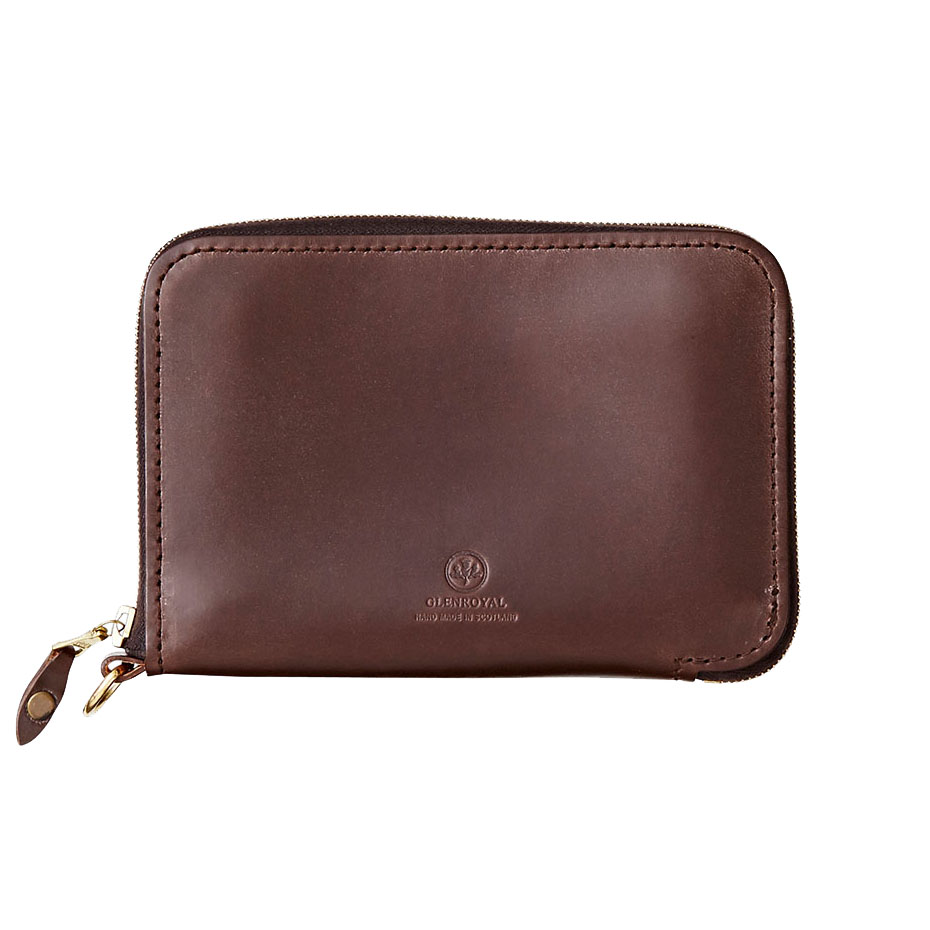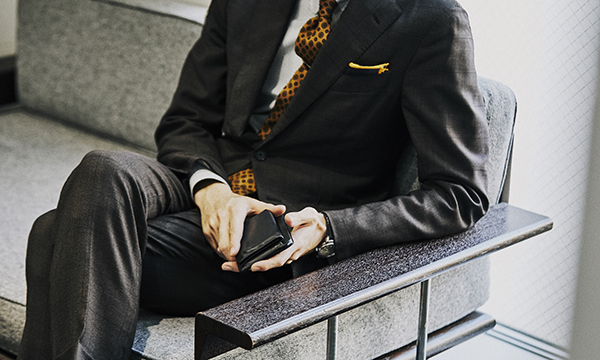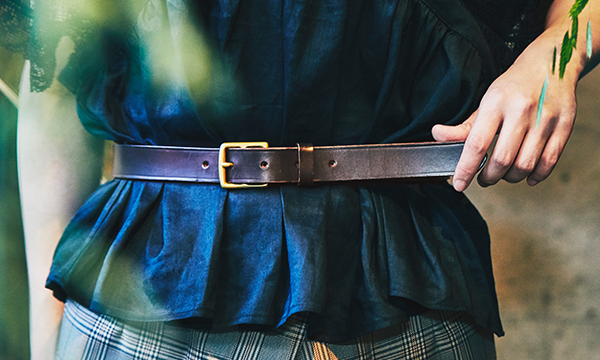No.005
Essentials for a globe-trotting designer Contents for his day-to-day blog
representative of Archive & StyleMr. Masahiko Sakata
The Glenroyal Pocket Book Cover has recorded the beginnings and ends of some of his travels.
He’s been involved with a number of clothing designs and has a deep knowledge of Britain: Designer Masahiko Sakata. Every single design that he sketches at his destinations is rendered with a clear memory, and fuels his output as a designer. We talked to Masahiko about England and its designs as well as his fond memories of Glenroyal.
Attitude towards fashion learned on his first trip to England
━What impression do you have of England?
The first foreign country I visited was when I was 20, which was around 1990, I guess. I was on a tour of 3 countries and went to Paris, London and Rome. All cities with items loved as classics. The economic outlook was bad at the time and the fact that England was several times more dark than now remains in my mind. Kensington Market, which no longer exists, was a cluster of buildings housing vintage shops; it had an unsafe feel, but more than anything else, reeked of the underground. I bought a military blazer at one of the used clothing stores from a man with a Mohican hairstyle and dressed like a punk. He was kind of scary and nothing about him suggested to me that he would know anything about blazers, but he told me a lot about the buttons and other details. It was quite a shock to me to experience up close that even punks knew something about the classics of other fashion genres. I was into mod clothing at the time, and this encounter with the punk sales assistant became the impetus for me to make sure that I studied up on the basics and the finer points of the items loved as classics.
After that experience, I served as director at the Japanese version of the department store brand Hallows in London from 2004 through 2010. I frequently had to commute to London, which made me love British culture on an even deeper level.

Absolute aesthetics always dwell in British items
━What is good about British products?
Well, for example, when I get a suit or shirt tailored in Italy, the tailor makes it so that it feels comfortable to wear. If it’s in Britain, this is not always the case. There are a lot of people in Italy who are somewhat plump, so clothes are often made with enough give to fit such people. But in England, the idea is that the product is good-looking and people need to fit themselves into it. There is an absolute aesthetic in things. Clothing has its roots in items such as royal clothing, so it’s made to be sturdy. The greatness of English products is that such ways of thinking have been handed down to every generation.
Among the things I collect are pin cushions. The design is a traditional leather shoe that’s even made of silver. I thought that was a very British product. If sold at a market, they would definitely range in price from 500 yen to 30,000 yen. I buy them whenever I can find them.
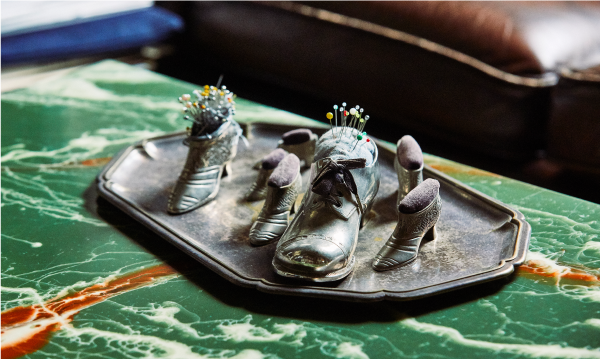
Habit of being on the lookout keeps design close at heart
━What interests you about designs?
Designs are not special things. I mean, isn’t clothing just an everyday item? I once went to a party when I was 21, and bought leather shoes to go to a slightly fancy restaurant. It was raining that day, so I chose a rubber-soled pair. You don’t slip, and they’re a lot better than you might think. It’s important to pay attention to things around you in this way, every day of your life. So you know that on rainy days, you want to wear this pair of shoes instead of another style. Things like that. That’s why I keep in mind “clothes that help you out with what you need” when I design. What’s more, when I wore those rubber-soled shoes, my teacher at the time told me that “rubber soles were uncool,” and that hurt (he laughs).

10-year companion keeps notes for my memories
━When did you purchase the Glenroyal you love to use?
I special-ordered my pocketbook cover from a brand that I was directing over 10 years ago. I had several items of different sizes that I was using, but this size was really useful and I used it nonstop. My Range Rover and Jaguar vehicles are the same way, in that the British green color looks cool. Green is often seen as the typical example of a color that does not sell and stores usually don’t want to make things in green, but I was adamant. As the color changes, I love to see how it gets browner with the years. I don’t travel without it, and jot down what I bought and ate and what I felt while I was there, as well as ideas and concepts that came to me. On many an occasion, these later spur my memory , so I keep up this practice.
I bought this wallet to use for travel. I have had it mended so I can continue to use it, and when I can get no more use out of it, I replace it by buying another one, in a cycle. You know the Japanese superstition that an overused wallet loses all its good luck, right (he laughs)? Many Glenroyal products are always in production because they have become classics, so I like that I can rest assured that if one of mine is damaged, I can always buy another to replace it. Since the leather is so sturdy, the products don’t lose their shape, which is another thing I love. I carry this wallet in my back pocket, yet it retains a firm shape. The stitchwork is carefully done, and gives me that British sense of absolute aesthetics.


Immersed in making things by hand in a peaceful environment
━What is your impression of Glenroyal?
(He takes out a photograph.) This is a collection of photographs taken after Paul McCartney left the Beatles. Paul secluded himself in the countryside and quietly recorded music. His photographer wife Linda McCartney captured shots of his days and made a book of them. The location where they were taken just happens to be a peninsula close to the Glenroyal workshop. When I look at these pictures, I sense just how relaxing the Scottish countryside towns are. The area is one in which unnecessary information does not come in, andI believe it is precisely because quiet manufacturing continues to take place there that products that are loved and used for years can be born.
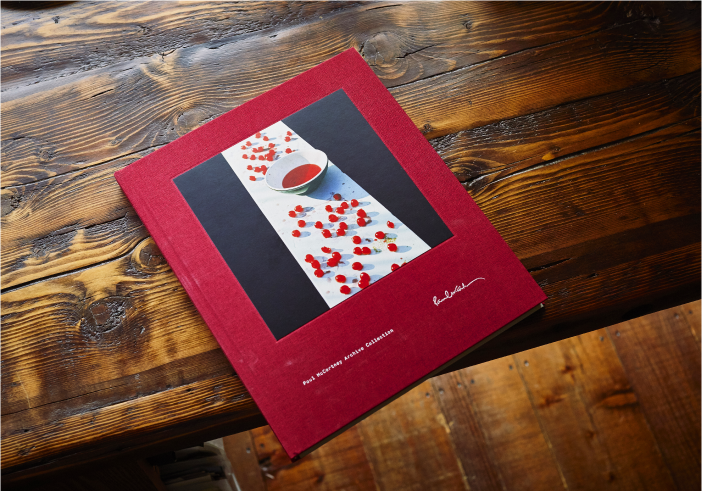
Cool even if scratched: the true appeal of leather
━Is there a kind of maintenance you feel is critical for your product?
I basically do none. There are people who love to make sure that even leather shoes are shined so they sparkle, but that is something that I don’t really care for. Although I do use a brush to remove dirt when they are really dirty or add color with polish when the color is coming off. Even so, I am careful not to take too much care in trying to make them look like new. If they are shined up too much, don’t you think you’d get upset if anything even came close to brushing up against them? Shoes that are too smart, look good superficially, but have no personality. Delicate use of leather products creates this kind of wrinkled record of use, which I personally like. I would want to wear even crocodile shoes on days when it’s raining without worrying about doing so. I mean, don’t crocodiles splash around in water all day (he laughs)? The best feature of leather products is that they look great even if scratched.
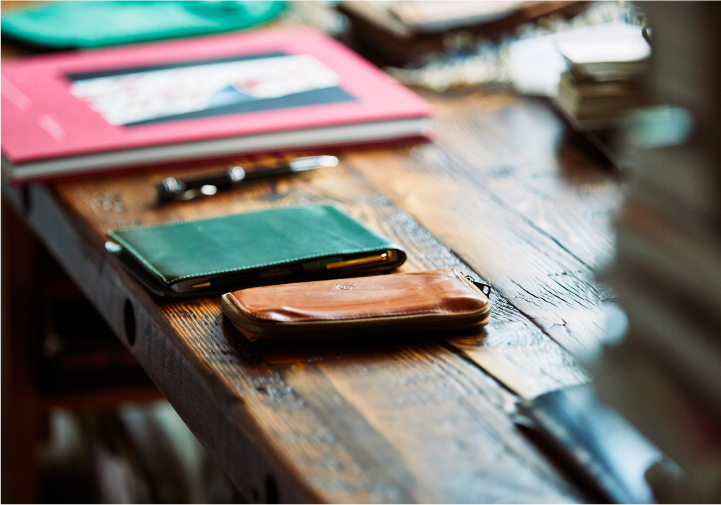
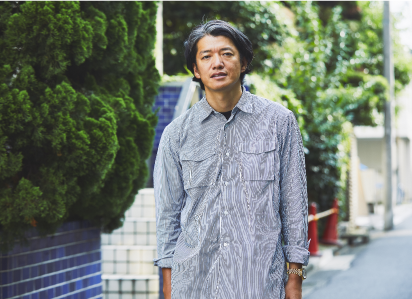
photoTRYOUT textK-suke Matsuda
representative of Archive & Style
Mr. Masahiko Sakata

Born in 1970. Managed several collection brands before starting career as a freelance designer. In 2004, he founded his own design studio, Archive & Style. His activities outside design are many, and include opening vintage shops. Recently, Masahiko has been involved in the creative direction of Takeo Kikuchi.
photoTRYOUT textK-suke Matsuda
